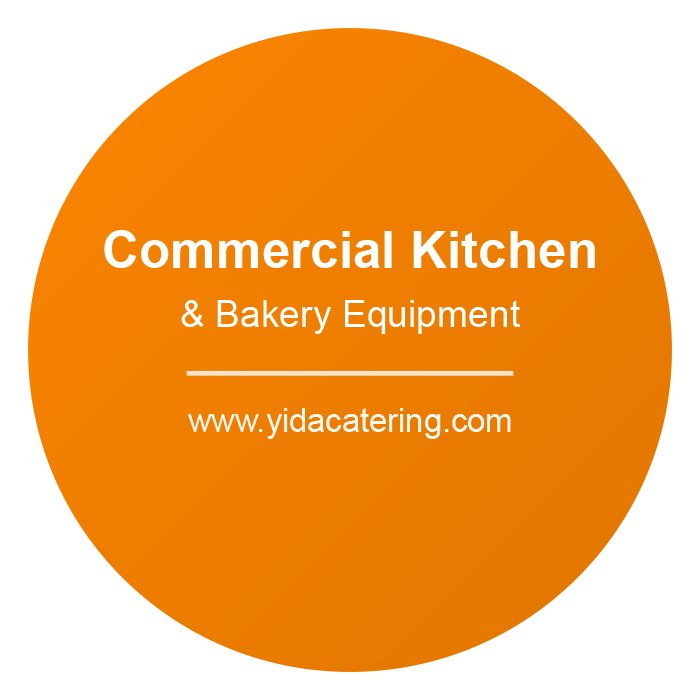
For any professional pastry chef or baker, the ultimate challenge is consistency. The painstaking process of manually rolling dough to a perfectly uniform thickness is not only labor-intensive but also leaves room for error. This is where precision engineering meets culinary art. A commercial countertop dough sheeter is the definitive tool for transforming this challenge into a seamless, efficient process, ensuring every single product is flawless.
What is a Commercial Countertop Dough Sheeter?
A commercial countertop dough sheeter is a specialized piece of equipment designed to roll out dough to precise, consistent thicknesses. It automates and perfects the work of a rolling pin.
How It Works: The operator places a piece of dough on the conveyor belt, which then feeds it through a set of rollers. The distance between these rollers can be adjusted with extreme precision, from a substantial 50mm down to a paper-thin 0.2mm.
The Key Difference: Its core advantage lies in its consistency and efficiency, especially with features like a reversible belt for laminating.
Here’s a clear comparison with traditional manual rolling:
| Feature | Commercial Countertop Dough Sheeter | Manual Rolling (Rolling Pin) |
|---|---|---|
| Action | Automated rollers, reversible conveyor belt. | Manual pressure applied by the user. |
| Best For | Laminated doughs (croissants, puff pastry), fondant, pie crusts, pasta. | Small, non-critical dough tasks. |
| Consistency | Perfect, uniform thickness every time. | Highly dependent on user skill; prone to unevenness. |
| Efficiency | Handles large dough weights (e.g., up to 4kg) in a timely manner. | Labor-intensive and time-consuming. |
Where Can a Countertop Dough Sheeter Be Used?
This machine’s precision and efficiency make it a cornerstone in any environment demanding dough perfection.
- Pâtisseries & Artisan Bakeries: Essential for creating the delicate, multi-layered structure of croissants, puff pastry, and danishes.
- High-End Restaurants: Perfect for producing house-made pasta, gourmet crackers, and uniform pie crusts with superior texture.
- Cake Decorating & Specialty Shops: The ultimate tool for sheeting fondant and marzipan to an ultra-thin, even layer for flawless cake covering.
- Pizzerias & Cafes: Significantly speeds up the process of preparing pizza bases or flatbreads, ensuring a consistent product for every customer.
Why Should You Choose a Countertop Dough Sheeter?
Investing in a countertop dough sheeter provides clear advantages that elevate both your product quality and operational workflow.
✅ Unmatched Precision: Achieve any thickness from 50mm to 0.2mm. This level of control is impossible to replicate by hand and is critical for high-end pastry.
✅ Superior Consistency: The reversible belt function allows for gentle, repeated passes, building perfect lamination for the flakiest textures without stressing the dough.
✅ Significant Workflow Improvement: Efficiently sheet dough batches up to 4kg. What once took considerable time and effort can be accomplished in a fraction of the time.
✅ Space-Efficient Design: Modern units are often foldable, providing the power of a full-size sheeter without demanding permanent floor space in a compact kitchen.
How Do You Properly Operate a Countertop Dough Sheeter?
Following these steps ensures optimal results and extends the life of your equipment.
Step-by-Step Guide:
- Prepare the Dough: Ensure your dough is properly chilled, especially for laminated varieties.
- Set Initial Thickness: Start with a wider roller setting. Lightly flour the dough and the 430mm conveyor belt.
- First Pass: Guide the dough through the rollers.
- Reverse and Reduce: Use the reversible function to send the dough back through, adjusting the rollers to a slightly thinner setting with each pass.
- Final Thickness: Continue this process until you reach your target, down to a delicate 0.2mm if needed.
Best Practices:
- Safety First: Always operate the machine with the safety guards in the correct position.
- Incremental Adjustments: Avoid drastic thickness reductions between passes to prevent tearing or stressing the dough.
- Keep it Clean: Thoroughly clean the rollers and conveyor belts after use to maintain hygiene and prevent dough buildup.
What Should You Consider When Choosing a Countertop Dough Sheeter?
Use this checklist to ensure your investment perfectly matches your operational needs.
☐ Thickness Range: Does the machine offer the versatility you need, from thick (50mm) to paper-thin (0.2mm)?
☐ Capacity & Width: Can the sheeter handle your typical batch weight (e.g., 4kg), and is the 430mm belt width suitable for your products?
☐ Reversible Function: Is a reversible belt included? This is a non-negotiable feature for professional lamination.
☐ Footprint & Storage: If space is a concern, is the unit foldable for convenient storage?
☐ Compliance & Build: Does the sheeter feature professional-grade construction and comply with relevant industry safety standards?
In conclusion, a commercial countertop dough sheeter is not a luxury; it’s a fundamental tool for achieving excellence and consistency in the culinary arts. Its ability to deliver precise, repeatable results empowers chefs to create superior products while optimizing kitchen workflow. By selecting a sheeter that aligns with the criteria above, you are investing directly in the quality and reputation of your brand.
Ready to elevate your craft? Browse our curated selection of professional countertop dough sheeters or consult with an equipment specialist to find the perfect fit for your business.

